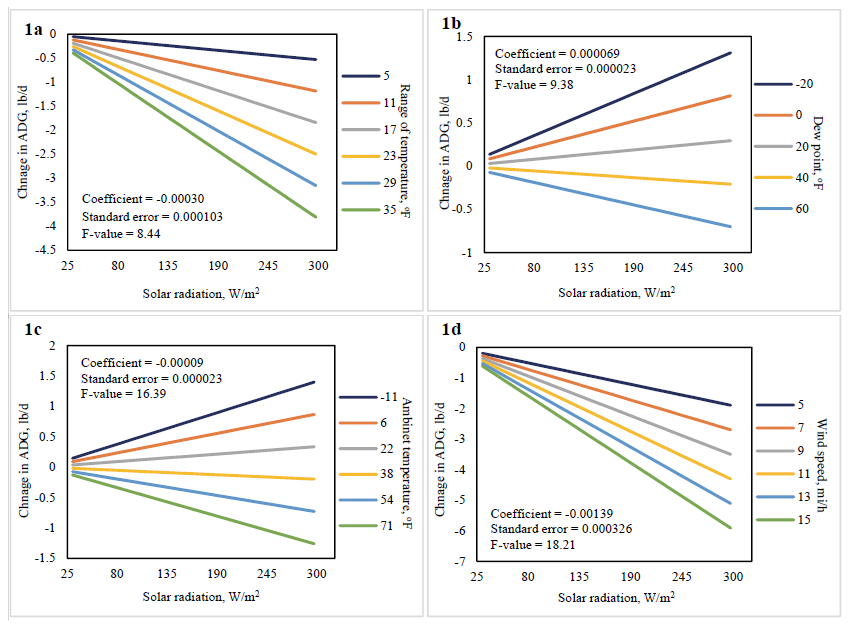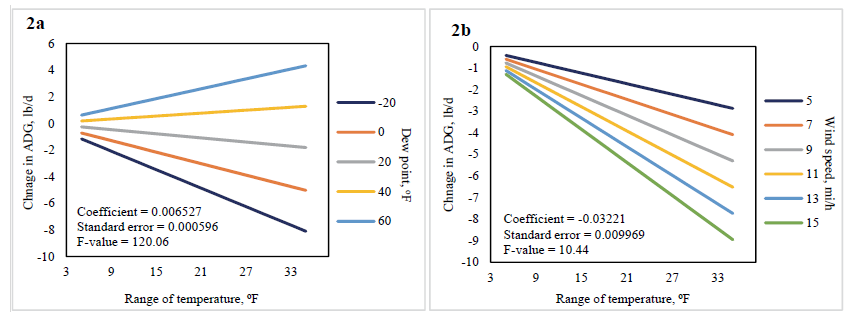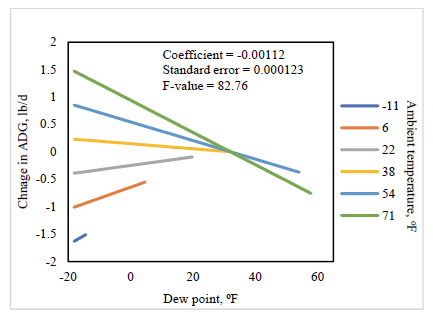How average daily gain is influenced by weather variables in beef steers
(AS2040-10, September 2021)The objective of this study was to examine how much variation in average daily gain (ADG) is accounted for by weather variables (ambient temperature, range of temperature, solar radiation, dew point and wind speed). Weather variables accounted for an additional 55.4% of the variation in ADG of beef steers after accounting for body weight, dry matter intake, dietary energy density and the week of the year. This has increased our current understanding of factors influencing ADG, which should be included when beef cattle producers make their ADG projections.
This article is part of the 2021 North Dakota Livestock Research Report.



